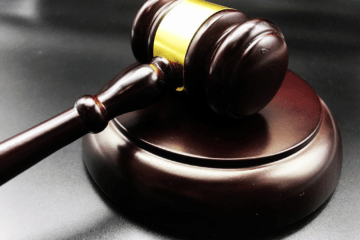
Order XI of the Code of Civil Procedure enacts the law with regard to the appearance of the parties to the suit and, the consequences of their non-appearance. It also provides a remedy for setting aside an order or dismissal of the suit as also the setting aside of an ex parte decree passed against the defendant.
Appearance of Parties: Rules 1 and 12
Rule 1 states that the parties to the suit must attend the court in person or by their pleaders on the day fixed in the summons for the defendant to appear.
Rule 12 provides that where a plaintiff or defendant, who has been ordered to appear in person, does not appear in person or show sufficient cause for non -appearance, the court may dismiss the suit, if such person is a plaintiff, or proceed an ex parte decree if such person is the defendant.
Where neither party appears: Rule 3
The rule states that in cases where neither the defendant, nor the plaintiff appears when the suit is called for hearing, the Court may dismiss it. In Firdous Omer v. Bankim Chandra Daw ((2006) 6 SCC 564), the Court held that dismissal of a suit for non-prosecution or for non-appearance of plaintiff does not amount to “decree” and is, therefore, not appealable.
Where only plaintiff appears: Rules 6, 10
Rule 6 of the Code states that in cases where the plaintiff appears and the defendant doesn’t, the plaintiff has to prove service of summon to the defendant. If the service is proved, the court may proceed ex parte against the defendant and may pass a decree in favour of the plaintiff, if he is able to prove his case.
Rule 10 states that where there are two or more plaintiff and one or more of them appear and the others do not, the court may permit the suit to proceed as if all the plaintiffs had appeared, or make such order as it thinks fit.
In Sangram Singh v. Election Commission (AIR 1955 SC 425), the court has stated that this provision is confined to first hearing and does not per se apply to subsequent hearings.
Where only defendant appears: Rule 7 – 11
According to Rule 7, where the defendant appears on the adjourned day and assigns a good reason for his previous non-appearance, the court may hear him upon such terms as the court directs as to cost treating as if he had appeared on the day fixed for the appearance.
Rule 8 states that where the plaintiff does not appear, and the defendant does and does not admit the plaintiffs claim, wholly or partly, the Court shall pass an order dismissing the suit. The Rule also enacts that if the defendant admits the plaintiff’s claim as a whole or a part thereof, the court will pass a decree against the defendant upon such admission and dismiss the suit for the rest of the claim.
Rule 9 precludes the plaintiff thereafter from filing a fresh suit on the same cause of action. He may, however, apply for an order to set aside the order or dismissal. In Lachi Tewari v Director of Land Records (AIR 1948 SC 41), it was stated that if the court is satisfied that there was sufficient cause for his non-appearance the court may set aside the order of dismissal and fix a day for proceeding with the suit. Rule 9 (2) states that before passing any such order, notice must be served to the opposite party.
According to Rule 11, where there are two or more defendants and one or more of them do not appears the suit will proceed and at the time of pronouncement of judgement, the court may make such order as to the absent defendants as it thinks fit.
Where summon is not duly served: Rule 2,5 and 6
The service of summon to the defendant is a condition precedent to fair trial. In cases where the summon is duly served and the same is proved by the plaintiff, but the defendant fails to appear, the court may proceed to the suit ex parte. Where the summon is not duly served on the defendant or it does not give him sufficient time to represent his case effectively, no decree can be passed against him
Rule 2 enacts that the suit may be dismissed where the summon is not served on the plaintiff failure to pay costs for service of summons to defendant or to present copies of the plaint.
Rule 4 states that in cases where the court is satisfied that there was sufficient cause for such failure. The court shall set aside such order of dismissal and shall fix a day for proceeding with the trial.
Rule 5 states that if the suit of the plaintiff is dismissed by the court within the period of limitation, he can file a fresh suit.
Rule 6 (1) (b) enacts that in cases where it is proved that summon is not duly served, the court shall direct a second summons to be issued and served on the defendant and Rule 6 (1) (c) enacts that f it is proved that the summons was served on the defendant, but not in sufficient time to enable him to appear and answer on the day fixed in the summons, the Court shall postpone the hearing of the suit to future day to be fixed by the Court, and shall direct notice of such day to be given to the defendant.




0 Comments